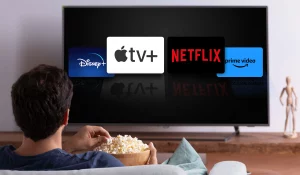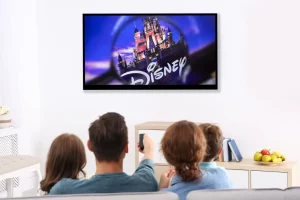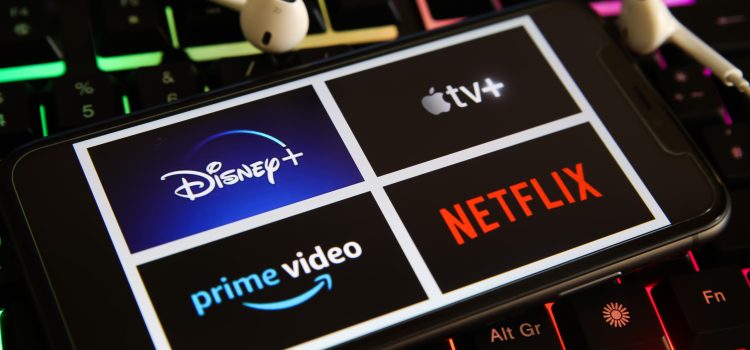
Introduction
In recent years, the rise of streaming services has revolutionized the way content is consumed, fundamentally altering the landscape of traditional media. This article delves into the multifaceted impact of streaming on traditional media, examining shifts in consumption patterns, economic repercussions, and the evolving strategies of traditional media outlets in response to this digital disruption.
The Rise of Streaming

-
Historical Context
The concept of streaming media dates back to the early days of the internet, but it wasn’t until the advent of high-speed broadband and advancements in digital technology that streaming became a viable alternative to traditional media. Services like Netflix, Hulu, and Amazon Prime Video have led the charge, providing on-demand content that caters to the changing preferences of modern audiences.
-
Technological Advancements
Key technological advancements, such as improved compression algorithms, cloud computing, and mobile internet, have facilitated the growth of streaming services. These technologies have enabled seamless, high-quality content delivery, making streaming a convenient and attractive option for consumers.
Changes in Consumption Patterns

-
On-Demand Viewing
One of the most significant shifts brought about by streaming is the transition from scheduled programming to on-demand viewing. Traditional media, particularly television, has long adhered to a fixed schedule, requiring viewers to tune in at specific times. Streaming, on the other hand, allows users to watch content whenever they choose, leading to greater flexibility and personalization.
-
Binge-Watching Phenomenon
The advent of streaming has also popularized binge-watching, where viewers consume multiple episodes or even entire seasons of a show in one sitting. This behavior contrasts sharply with the episodic release model of traditional television and has influenced content production, with many streaming platforms now releasing entire seasons at once.
-
Diverse Content Offerings
Streaming services have democratized content creation, providing a platform for diverse voices and niche genres that may not have found a place in traditional media. This has broadened the range of available content, catering to a wider array of tastes and interests.
Economic Impact

-
Advertising Revenue
The shift to streaming has had a profound impact on advertising revenue for traditional media outlets. As audiences migrate to digital platforms, traditional media companies have seen a decline in viewership and, consequently, advertising dollars. This has forced many to rethink their business models and explore new revenue streams.
-
Subscription Models
Streaming services primarily operate on subscription-based models, generating steady revenue from monthly or annual fees. This contrasts with the ad-supported model of traditional media, providing a more predictable income stream and reducing reliance on advertisers.
-
Production and Distribution Costs
The economics of content production and distribution have also been affected. Streaming platforms often invest heavily in original content to attract and retain subscribers, leading to increased competition and higher production values. Additionally, the global reach of streaming services allows for more efficient distribution compared to the geographically constrained nature of traditional media.
Traditional Media’s Response

-
Adaptation and Integration
In response to the rise of streaming, many traditional media companies have launched their own streaming services or partnered with existing platforms. Examples include Disney+ by The Walt Disney Company and HBO Max by WarnerMedia. These initiatives aim to leverage existing content libraries while creating new, exclusive content to attract subscribers.
-
Hybrid Models
Some traditional media outlets have adopted hybrid models, combining elements of both traditional and streaming media. For instance, many television networks now offer on-demand streaming of their shows through apps or websites, providing viewers with the flexibility of streaming while maintaining a presence in traditional broadcasting.
-
Investment in Digital Infrastructure
To remain competitive, traditional media companies have invested in digital infrastructure, enhancing their online presence and optimizing content delivery. This includes upgrading websites, developing mobile apps, and utilizing social media to engage with audiences.
The Future of Media Consumption

-
Continued Evolution
The media landscape is likely to continue evolving as technology advances and consumer preferences shift. Innovations such as virtual reality (VR), augmented reality (AR), and artificial intelligence (AI) are poised to further transform how content is created and consumed.
-
Coexistence of Platforms
While streaming has undoubtedly disrupted traditional media, it is unlikely to completely replace it. Instead, a coexistence of platforms is expected, with traditional media adapting to incorporate digital elements and streaming services expanding their offerings to include live and interactive content.
-
Challenges and Opportunities
The ongoing evolution presents both challenges and opportunities for media companies. Those that can successfully navigate the changing landscape, leveraging new technologies and adapting to consumer demands, are likely to thrive. Conversely, those that fail to innovate may struggle to remain relevant.
Conclusion
The impact of streaming on traditional media is profound and far-reaching, influencing consumption patterns, economic models, and industry strategies. As the media landscape continues to evolve, the key to success lies in adaptability and innovation. By embracing change and leveraging new technologies, both streaming services and traditional media outlets can coexist and thrive in this dynamic environment.









